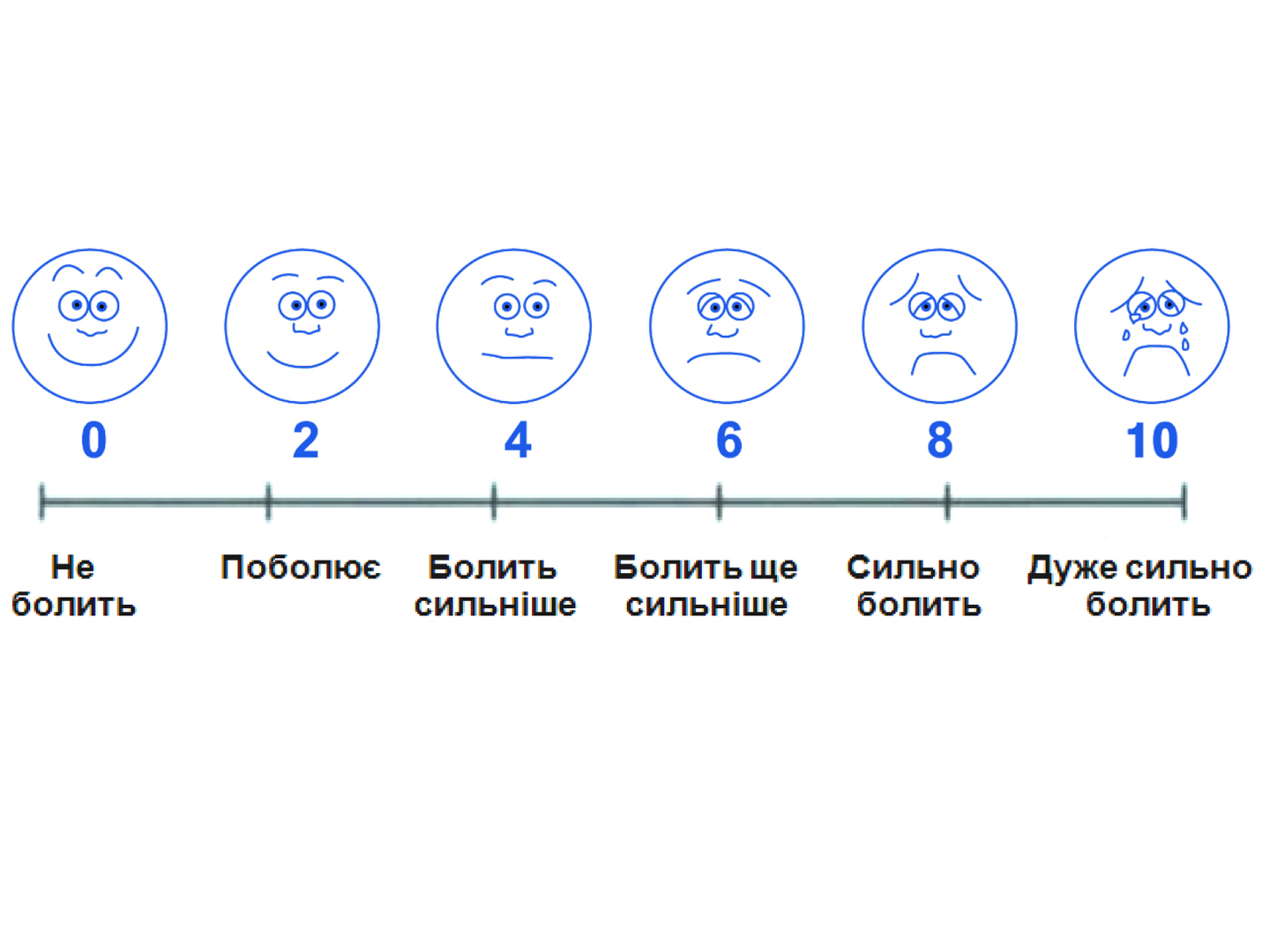Experience of intravenous Paracetamol use after orthopedic surgeries
Medical Academy of Postgraduate Education
State Institution «Institute of Spine and Joint Pathology named after M.I. Sitenko of National Academy of Medical Sciences of Ukraine», Kharkiv, Ukraine
Summary.The efficacy of postoperative analgesia of patients operated on for orthopedic pathology has been assessed. In the study, pediatric patients were divided into 2 groups. In first group analgesia analgesia was carried out using intramuscular injections of promedol, in second one promedol was used in combination with intravenous paracetamol. The analysis of the analgesic effect of paracetamol, the incidence of side effects has been carried out. The study demonstrated the usefulness of intravenous paracetamol use in addition to opioids for the treatment of postoperative pain following orthopedic surgeries.
Key words: pain syndrome, paracetamol, narcotic analgesics, anesthetic efficacy.
Introduction
For many years, interest has been focused on postoperative analgesia in children. Patients tend to experience severe pain syndrome after orthopedic surgeries. According to different authors, up to 75% of patients are suffering from pain of varying intensity in the early postoperative period. The consequences of inadequate pain treatment in terms of physical and emotional trauma are rather considerable.
Postoperative pain impairs the quality of life and leads to a slower rehabilitation, late recovery of body functions, emotional tension, as well as contributes to changes in pain modulation mechanisms that can result in the development of persistent postoperative neuropathic pain [4].
Many professional efforts are also aimed at the search for the optimal combination of analgesics belonging to various pharmaceutical classes. The combination of non-steroidal anti-inflammatory drugs (NSAIDs) and paracetamol with opioid analgesics in the early postoperative period allows to improve the quality of analgesia, and reduce the need for opioids, resulting in improved respiratory function, decreased incidence of nausea and vomiting, and minimization of sedation effect [1, 11, 20]. This explains the growing number of studies on the combined use of non-opioid drugs with narcotic analgesics [8, 9]. Meanwhile, the isolated use of NSAIDs after surgery is controversial, as not all the studies demonstrate significant advantages [11, 18].
When choosing analgesics for children, focus should be made on high-performance medicinal products with the lowest risk of adverse reactions. Currently, paracetamol fully meets the criteria for high efficacy and safety, and is recommended by the World Health Organization. Paracetamol (acetaminophen) is one of para-aminophenols, which are used in clinical practice as an effective analgesic and antipyretic. Due to the rapid absorption in the intestine after oral administration, a good analgesic effect is ensured. Furthermore, the drug is widely used rectally and intravenously [2, 7, 15].
Paracetamol is not contraindicated in patients with gastric mucosa lesions, bleeding disorders or respiratory failure [3, 13]. The drug is effective in treating postoperative pain [10, 11], and has a comparable to morphine analgesic effect [8]. Several authors demonstrated that the administration of paracetamol significantly reduced opioid consumption after orthopedic surgery [10, 14].
This study was conducted to evaluate the efficacy of analgesic effect and frequency of adverse events after intravenous administration of paracetamol in combination with intramuscular administration of Promedol.
The drugs used in the study have different points of application in their effect on the nervous system that can potentially provide a better quality of analgesia. Paracetamol has a predominantly central mode of action, and is associated with the inhibition of cyclooxygenase isozymes [5], although there are various hypotheses about the mechanism of action, such as through inhibition of prostaglandin synthesis or activation of descending serotonergic pathways [12, 16]. Meanwhile, the opioids exert the analgesic effect by their agonistic action on the opiate receptors in the central nervous system [5]. Therefore, these agents provide an additional analgesic effect functioning at the level of the peripheral and central nervous system.


